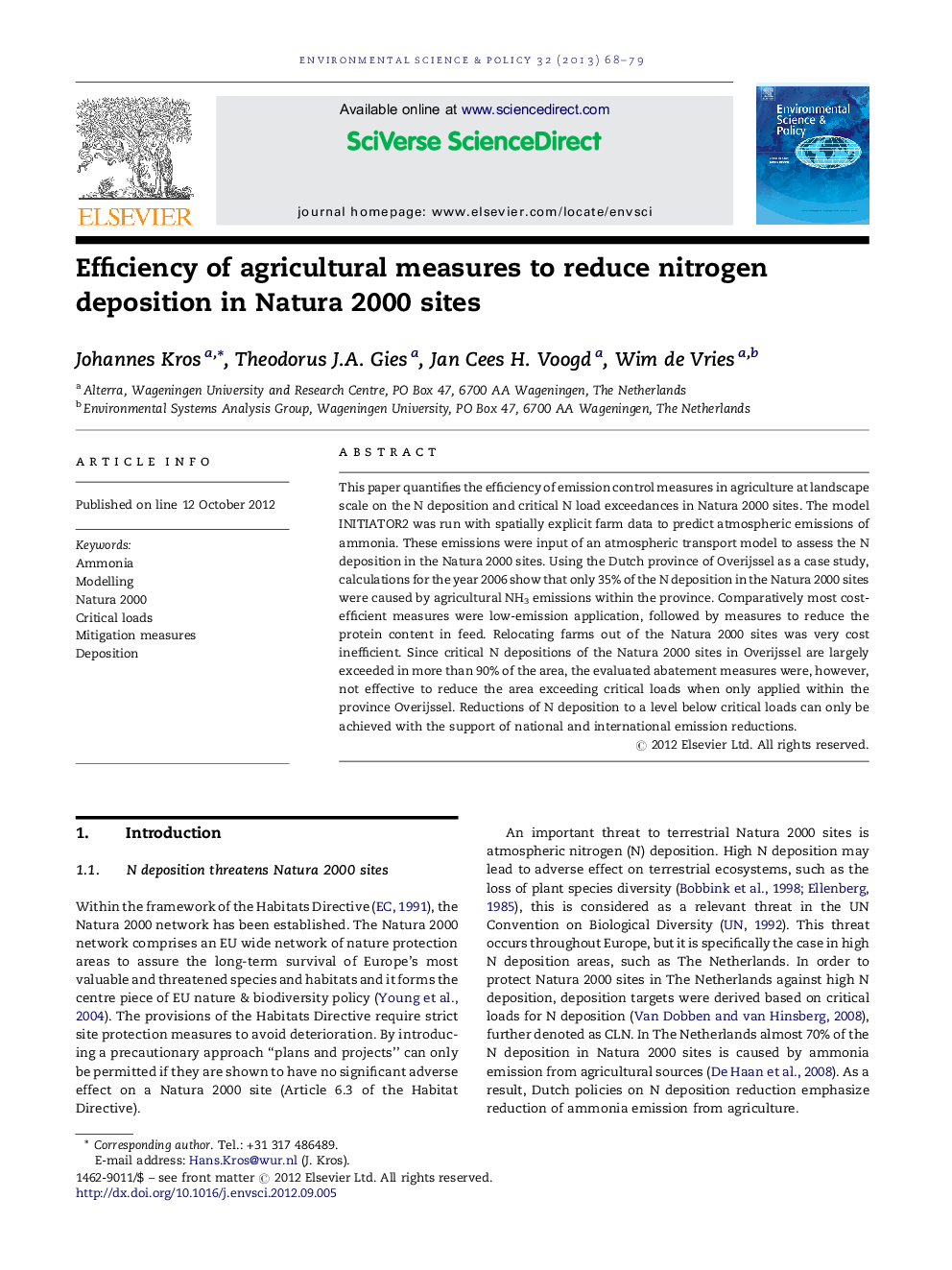| Article ID | Journal | Published Year | Pages | File Type |
|---|---|---|---|---|
| 1053615 | Environmental Science & Policy | 2013 | 12 Pages |
This paper quantifies the efficiency of emission control measures in agriculture at landscape scale on the N deposition and critical N load exceedances in Natura 2000 sites. The model INITIATOR2 was run with spatially explicit farm data to predict atmospheric emissions of ammonia. These emissions were input of an atmospheric transport model to assess the N deposition in the Natura 2000 sites. Using the Dutch province of Overijssel as a case study, calculations for the year 2006 show that only 35% of the N deposition in the Natura 2000 sites were caused by agricultural NH3 emissions within the province. Comparatively most cost-efficient measures were low-emission application, followed by measures to reduce the protein content in feed. Relocating farms out of the Natura 2000 sites was very cost inefficient. Since critical N depositions of the Natura 2000 sites in Overijssel are largely exceeded in more than 90% of the area, the evaluated abatement measures were, however, not effective to reduce the area exceeding critical loads when only applied within the province Overijssel. Reductions of N deposition to a level below critical loads can only be achieved with the support of national and international emission reductions.
► We model nitrogen fluxes and the impact of agricultural measures in a province. ► We quantifies the efficiency of emission control measures in agriculture on the N deposition and critical N load exceedances in Natura 2000 sites. ► Most cost-efficient measures were low-emission application and low protein feeding.
